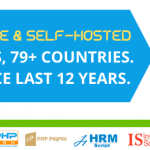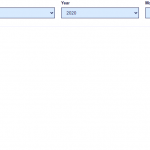Company Payroll Management

Who doesn’t love a well-paying company which pays its employees at the right time every time. That’s where payroll management comes into play. Payroll management refers to the administrative handling of a company’s employee’s financial records. Details such as employees increment, deductions, salaries, etc. The tasks involved in payroll operations range from onboarding new employees to setting up payroll policies, defining pay components, gathering inputs, calculating and verifying payouts, processing salaries, distributing pay slips, and filing taxes, accounting, and reports.
Payroll Management System

Pre-Payroll Management
The final amount paid to each employee is determined by a number of criteria. When it comes to compensation, the various policies of the organization come into play. To begin, these policies must be clearly stated and authorized by management in order to ensure consistent payroll processing and administration. Some of the important policies regardless of companies are Time and Attendance Policy, Employee Pay Policy, Leave and Benefits Policy and Reimbursement Policy.
The need for collecting inputs is absolutely necessary in pre-payroll management. Information about the employee is distributed to various departments within the organization. In MNCs, the task of compiling data on the same can be quite tiring. A little recommendation is to utilize smart payroll software with integrated features like leave and attendance management and an employee self-service portal to ensure that the input collection process runs smoothly. If payroll is to be processed, the following information must be addressed, such as employee joining date, attendance (include paid, sick, leave enhancements), new employee salary structure and so on.
Once all the information is gathered, it is the responsibility of the department handling payrolls to add them to the payroll cycle. Validating these inputs and updating the process helps in minimizing the possibility of an error and maintains in the smooth operations of the company.
Post Payroll Process
The payroll administrator must strictly comply with the legislative compliances while processing payroll. Various statutory deductions are deducted during payroll processing, including EPF, TDS, and ESI. These deductions are subsequently distributed to the appropriate authorities/government bodies for the efficient operation of the company. This process is known as Statutory Compliance.
Every organization has to have an accurate book of accounts. And one of the most important entries is the salary paid. As a result, as part of the payroll process, all salary information must be entered into the accounting or ERP system. This process is known as Payroll Accounting, one of the main components of payroll management.
After completing all of these steps, the company can finally pay salaries in cash, check, or bank transfer. Employee salary accounts are ideal for hassle-free transfers. One must submit salary bank account statements to the branch with details such as employee ID, account number, salary amount, and so on for payment to salary accounts. This step is generally known as Payout.


Understanding the payroll term is vital, but so is understanding its components. Payroll components include taxable and tax-exempt pay, variable and steady compensation, earnings, allowances, and deductions. The following are the most important:
CTC
When new recruits join the organization, they are given a whole wage package. CTC, or Cost To Company, is another terminology for the same thing that is used in nations such as India and South Africa. It specifies the total amount of money that an employer spends on an employee over the course of a year.
EARNINGS
It comprises of Basic salary (This is the base wage set by the central and state governments that every working professional is supposed to receive before any additional perks and bonuses), Gross Salary (A gross salary is the amount of an employee’s monthly wages, salaries, allowances, rents, and other kinds of earnings before any deductions or taxes are deducted) and Net Take Home Salary (The actual pay that an employee receives is known as net salary or take home pay).
REIMBURSEMENTS
The act of rewarding an employee for business-related expenses incurred by an employee is known as reimbursement. Paying reimbursements in a separate reimbursement bank account for the employee is generally a smart practice. There are several sorts of reimbursements available such as Business Expense Reimbursements, Travel Reimbursements, Medical Reimbursements, etc.
Actual Payroll Management
At this step, the confirmed input data is loaded into the payroll system for actual payroll processing. The net pay is the result of adjusting for proper taxes and other deductions. To avoid difficulties, it’s usually a good idea to reconcile the data and double-check for accuracy after the payroll process is finished.
For this process and the smooth operation of it, many companies prefer using payroll systems or software. One of the primary reasons that most businesses choose Payroll Outsourcing Services is that defining wage components can be difficult when managing a payroll system. Aside from the gross and net compensation, there are several ‘components’ that make up a salary package.

Employers and employees must use these to compute taxes, EPF, medical bills, benefits, travel allowances, and other factors. One of the primary reasons that most businesses choose Payroll Outsourcing Services is that defining wage components can be difficult when managing a payroll system. The final stage is to create accurate reports that include information such as personnel costs by department or location. These reports are then forwarded to the finance department or management team for additional review. These are the factors that contribute to an efficient payroll process in India. This step is known as Reporting.







